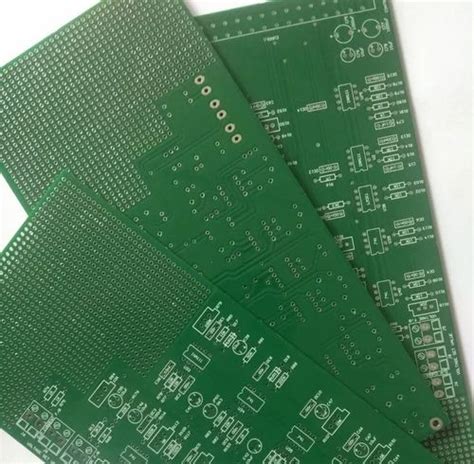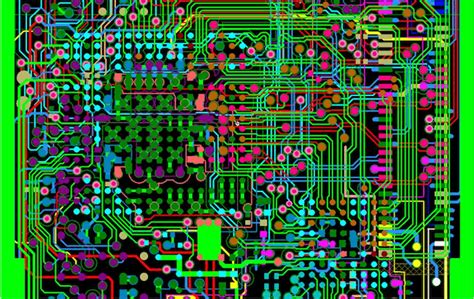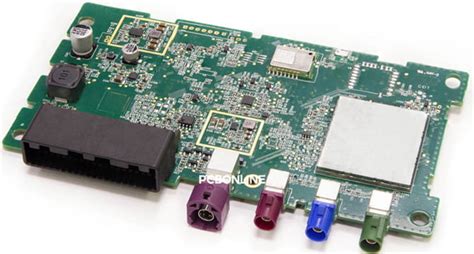Streamlining Success: The Future of Contract Electronic Assembly
Key Takeaways
In the rapidly evolving sector of contract electronic assembly, it is crucial to understand several key trends that are defining the future landscape. Firstly, the integration of innovative technologies such as automation and artificial intelligence has led to significant advancements in pcb assembly processes, enhancing both efficiency and accuracy. Companies increasingly rely on pcba techniques that streamline production lines and reduce time-to-market for new products. Furthermore, as manufacturers seek competitive advantages, trends like modular assembly approaches are gaining momentum. These not only simplify the assembly process but also allow for greater flexibility in responding to changing consumer demands. The workforce is also projected to adapt to these technological innovations, necessitating a focus on skills development in areas such as digital literacy and technical expertise. As sustainability continues to be a priority, businesses are exploring eco-friendly materials and processes within contract electronic assembly practices. This evolving landscape presents numerous opportunities alongside challenges that must be navigated carefully for optimal success in a global market that is more interconnected and dynamic than ever before.
The Evolution of Contract Electronic Assembly: A Historical Perspective
The landscape of contract electronic assembly, specifically the pcb assembly process, has undergone significant transformation over the past few decades. Initially focused on simplistic, manual assembly methods, the industry saw a gradual shift towards automated solutions in response to increasing demand for efficiency and precision. As consumer electronics surged in popularity during the late 20th century, companies turned to pcba (printed circuit board assembly) to enhance production capabilities while minimizing errors associated with human labor.
The 1990s marked a pivotal era with the introduction of advanced machinery and supply chain management systems that streamlined manufacturing processes. This evolution not only improved output but also reduced lead times, thus enabling businesses to respond swiftly to market changes. As technology continued to advance into the 21st century, innovations like surface mount technology (SMT) emerged, allowing for more compact and complex circuit designs.
“Innovation is the cornerstone of success in contract electronic assembly; embracing change is no longer optional but essential.”
Today’s contract electronic assembly operations prioritize agility and scalability through sophisticated software systems that manage everything from inventory to production scheduling. By leveraging data analytics and real-time tracking mechanisms, manufacturers can optimize their workflow and adapt swiftly to customer demands. This historical trajectory highlights how adaptability has become synonymous with success in this dynamic sector.
| Year | Key Development | Impact |
|---|---|---|
| 1980s | Initial manual processes | Higher error rates |
| 1990s | Introduction of automation | Improved efficiency |
| Early 2000s | Emergence of SMT | Compact designs |
| Present | Use of data analytics for agility | Enhanced responsiveness |
As we reflect on these milestones, it is evident that understanding this evolution offers vital insights into current trends poised to shape the future landscape of contract electronic assembly.
Key Trends Reshaping the Contract Electronic Assembly Landscape
The contract electronic assembly industry is witnessing transformative shifts that are set to redefine its operational framework and overall efficiency. One of the most significant trends is the growing importance of automation in pcb assembly processes, allowing companies to enhance production speed and accuracy while minimizing human error. This evolution aligns with the rising demand for high-quality pcba products, as customers increasingly expect shorter turnaround times without compromising quality. Additionally, the integration of Internet of Things (IoT) technologies enables real-time monitoring of manufacturing processes, facilitating quicker decision-making and more responsive supply chain management. As smart factories become a norm, we are also seeing a push towards collaborative robotics, which work alongside human operators to streamline operations.
Another compelling trend is the shift towards sustainable practices in contract electronic assembly. Companies are beginning to embrace environmentally friendly materials and processes, aiming not only to reduce waste but also to appeal to a more conscious consumer base. This focus on sustainability is becoming a key differentiator in a competitive market.
Furthermore, advancements in materials science are leading to the development of new substrates and components that support thinner designs while maintaining electrical performance. These innovations in materials directly impact pcb assembly, as they pave the way for lighter, faster, and more efficient designs tailored for modern electronic products.
In conclusion, staying attuned to these key trends is crucial for organizations looking to thrive in the rapidly evolving landscape of contract electronic assembly. By leveraging automation, embracing sustainability, and adopting advanced materials technology, businesses can position themselves at the forefront of this dynamic industry.
Innovative Technologies Driving Efficiency in Electronic Assembly
The landscape of contract electronic assembly is rapidly evolving, fueled by numerous innovative technologies that enhance efficiency and reduce costs. One of the most significant advancements in this arena is the integration of automated processes in pcb assembly operations. Automation not only speeds up production rates but also minimizes human error, ensuring higher quality standards. Furthermore, the use of smart manufacturing technologies, such as the Internet of Things (IoT) and artificial intelligence (AI), allows for real-time monitoring and data analysis throughout the assembly line. This leads to improved decision-making and faster response times to emerging issues.
In addition to automation, advancements in pcba design tools have transformed how companies approach electronic assembly. With powerful software solutions, designers can optimize layouts before they even reach the manufacturing stage, reducing wasted materials and minimizing production time. The transition to more sophisticated manufacturing techniques, such as additive manufacturing and advanced soldering methods, also plays a crucial role in enhancing the efficiency of assemblies.
The collaboration between manufacturers and suppliers has strengthened due to these technological advancements. They can now share data more seamlessly, leading to a more synchronized supply chain that boosts overall productivity. As such technologies continue to develop, they promise not only to streamline operations but also to set new standards for excellence in the contract electronic assembly industry. In embracing these innovations, companies position themselves strategically for sustained growth in an increasingly competitive market.
Strategies for Maximizing Success in Contract Electronic Assembly
To harness the full potential of contract electronic assembly, companies must adopt a comprehensive approach that prioritizes efficiency and innovation. First and foremost, investing in advanced technologies can significantly enhance pcb assembly processes. Robotics and automation play a critical role in minimizing errors and streamlining operations, thereby improving the quality and turnaround time of pcba services. Companies should also focus on cultivating a workforce proficient in the latest tools and techniques, as a skilled team is essential for navigating complex assemblies.
Furthermore, establishing strong relationships with suppliers can lead to better pricing on components, ensuring that projects remain on budget without sacrificing quality. Another key strategy is to implement rigorous quality control measures throughout the manufacturing process. This not only mitigates risks but also boosts client satisfaction and fosters long-term partnerships. Lastly, embracing agile methodologies allows companies to be more responsive to market changes, ensuring that they can adapt quickly while maintaining high standards of assembly.
These strategies collectively contribute to maximizing success in the ever-evolving realm of contract electronic assembly, positioning businesses not just to meet current demands but also to thrive amid future challenges. By focusing on these core areas, companies can establish a strong foothold in the competitive landscape of pcb assembly and pcba, driving growth and excellence across their operations.
Workforce Development: Skills for the Future of Electronic Assembly
As the landscape of contract electronic assembly continues to evolve, it is essential for professionals in the field to develop a comprehensive set of skills that align with emerging trends and technologies. The fast-paced integration of innovative technologies, such as automation and artificial intelligence, is transforming processes within the industry, particularly in pcb assembly and pcba operations. To thrive, workers must cultivate technical skills that encompass not only manual assembly techniques but also a deep understanding of software and systems that drive these advanced technologies. Furthermore, soft skills such as problem-solving, critical thinking, and effective communication are becoming increasingly vital as teams collaborate across geographical boundaries to produce high-quality electronic components. Organizations must invest in continuous learning initiatives and training programs that cater to these evolving requirements, ensuring their workforce is equipped to navigate the complexities of modern electronic assembly. By prioritizing workforce development, companies can not only enhance their operational efficiency but also maintain a competitive edge in the global market, ultimately shaping a successful path forward in the realm of contract electronic assembly.
Sustainability in Contract Electronic Assembly: A Growing Focus
In the realm of contract electronic assembly, sustainability is rapidly becoming a pivotal concern for companies striving to meet both market demands and environmental responsibilities. As industries increasingly prioritize eco-friendly practices, the sector is witnessing a shift towards sustainable methods in pcb assembly and related processes. This includes adopting greener materials, reducing waste, and enhancing energy efficiency throughout the pcba manufacturing lifecycle. Furthermore, emerging technologies play a crucial role in paving the way for these sustainable practices. For instance, innovations such as advanced automation and smart manufacturing systems not only optimize efficiency but also minimize environmental impact. By embracing these strategies, firms in the contract electronic assembly landscape can not only enhance their operational effectiveness but also contribute positively to the global sustainability goals. As consumer preferences evolve towards environmentally conscious products, companies that integrate sustainability into their pcba operations are more likely to gain a competitive edge and achieve long-term success in this dynamic market.
Challenges and Opportunities in the Global Contract Electronic Assembly Market
The global contract electronic assembly market is navigating a complex landscape marked by both significant challenges and exciting opportunities. One of the primary challenges is the rapid technological advancement in pcb assembly processes, which requires continuous investment and adaptation by companies to stay competitive. As pcba technologies evolve, manufacturers must balance the need for cutting-edge capabilities with cost efficiency, which can strain resources and impact margins. Additionally, supply chain disruptions and fluctuations in component availability pose ongoing risks to the timeliness and reliability of electronic assembly operations.
Despite these challenges, there are numerous opportunities for growth and innovation within this sector. The increasing demand for customized electronic solutions means that companies can leverage their capabilities in contract electronic assembly to meet niche market needs effectively. Moreover, the shift towards sustainability encourages businesses to adopt greener practices in their pcb assembly operations, creating a competitive advantage in an environmentally conscious market. As companies harness advanced technologies such as automation and artificial intelligence, they can improve production efficiency while minimizing human error.
Ultimately, navigating these challenges while capitalizing on emerging opportunities will define the future trajectory of the contract electronic assembly market. Adapting strategies that prioritize innovation alongside adaptation will enable businesses to thrive amidst an ever-changing landscape.
Case Studies: Successful Implementations of Modern Electronic Assembly Techniques
The landscape of contract electronic assembly is marked by numerous successful implementations that highlight the efficacy of modern techniques. For instance, a leading technology firm leveraged pcb assembly methods to streamline their production processes. By integrating automated systems with advanced pcba technologies, they were able to reduce lead times significantly while enhancing the quality of their products. This transition not only facilitated a quicker turnaround but also minimized human error in the assembly line, which is crucial in a high-stakes environment where precision is paramount. Another compelling case involved a startup specializing in wearable technologies. They adopted innovative pcb assembly solutions that allowed for rapid prototyping and iteration, making it easier to bring their products to market. As they scaled up production, the use of efficient pcba techniques enabled them to maintain cost-effectiveness without sacrificing performance or durability. These examples underline how embracing modern electronic assembly strategies can lead businesses toward optimal success in an ever-evolving industry landscape, demonstrating that with the right approach, companies can thrive amidst competitive pressures and changing consumer demands.
Conclusion
In the ever-evolving landscape of contract electronic assembly, understanding the future direction of the industry is essential for organizations aiming for success. As trends shift, printed circuit board assembly (PCB assembly) remains at the heart of innovation, pushing companies to adopt more effective methodologies in their processes. The rise of modern PCBA techniques reflects a commitment to enhancing operational efficiency while minimizing costs. This transition not only fosters greater productivity but also ensures that firms remain competitive in a global market fraught with challenges and opportunities. In addition, advancements in technology combined with a resilient workforce development approach contribute to the sustainable growth of contract electronic assembly. Organizations invested in finding and nurturing talent will effectively navigate these changes and implement strategies that enhance overall productivity. By embracing innovation and remaining agile, companies can adapt to emerging trends and capitalize on opportunities that arise, all while ensuring that they meet the rigorous demands of quality and precision inherent in PCB assembly today. Thus, an understanding of these dynamics is critical for those seeking optimal success in contract electronic assembly moving forward.
FAQs
What is contract electronic assembly?
Contract electronic assembly refers to the outsourcing of pcb assembly processes to specialized manufacturers who handle the production and assembly of electronic components into final products. This allows businesses to focus on core competencies while benefiting from expert assembly services.
How does PCBA enhance product development?
PCBA enhances product development by streamlining the manufacturing process, reducing time-to-market, and ensuring high-quality standards through advanced technologies and skilled expertise in pcb assembly.
What are the benefits of using a contract manufacturer for PCB assembly?
Utilizing a contract manufacturer for pcb assembly offers several advantages, including cost-effectiveness, access to state-of-the-art technology, and scalability. This can lead to improved efficiency and reduced operational risks for companies.
What trends are shaping the future of contract electronic assembly?
Emerging trends in the field include greater automation in pcba, increased focus on sustainability, and advancements in materials technology. These trends foster innovation and help meet the evolving demands of consumers and markets.
How can companies maximize their success in contract electronic assembly?
To maximize success, businesses should engage in thorough supplier evaluation, maintain clear communication with their partners, and stay informed about industry advancements that could enhance their pcb assembly processes.







